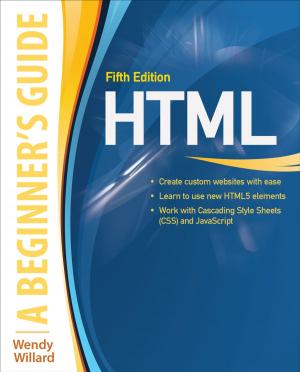The Art of Shaping the Metropolis
Nonfiction, Art & Architecture, Architecture, Reference, Design & Drafting| Author: | Pedro Ortiz | ISBN: | 9780071817974 |
| Publisher: | McGraw-Hill Education | Publication: | October 29, 2013 |
| Imprint: | McGraw-Hill Education | Language: | English |
| Author: | Pedro Ortiz |
| ISBN: | 9780071817974 |
| Publisher: | McGraw-Hill Education |
| Publication: | October 29, 2013 |
| Imprint: | McGraw-Hill Education |
| Language: | English |
A proven approach for addressing explosive metropolitan growth in an integrated and holistic manner
“The book provides a basis for the contemplation of the old network paradigm of the megalopolis into the informational meshwork of the mega- or metacity of the future. The handbook’s review of the networked past is invaluable, while its projection of these networks into future plans raises very many important questions for planners, urban designers, architects, and concerned citizens alike.” –From the Foreword by Professor Grahame Shane, Columbia University
For the first time, half the global population is living in urban areas—and that number is growing exponentially. Written by noted urban planner Pedro Ortiz, who served as director of the groundbreaking Madrid Metropolitan-Regional Plan, The Art of Shaping the Metropolis presents an innovative, agile solution for managing urban growth that enhances economic activity, environmental stability, and quality of life.
Based on the findings from Madrid and other cities, this timely guide offers a methodical system for addressing the crucial issues facing governments, professionals, the private and public sectors, developers, stakeholders, and inhabitants of twenty-first-century metropolises. The book details new rubrics to identify the process of growth and its evolution, new tools to monitor and gauge them, and new methods to synthesize them into a professional praxis that will be sustainable for the long term. Ortiz demonstrates how metropolises can be organized for a future that preserves the historic nucleus of the city and the environment, while providing for the necessary sustainable expansion of transportation, housing, and social and productive facilities.
Coverage includes:
- The dialogues of the metropolis
- The challenge
- The inheritance
- Balanced urban development—fabric and form
- The chess on a tripod (CiTi) method to build the model
- Madrid as testing ground
- Practical considerations in implementing a metropolitan plan
- Translating the model elsewhere
A proven approach for addressing explosive metropolitan growth in an integrated and holistic manner
“The book provides a basis for the contemplation of the old network paradigm of the megalopolis into the informational meshwork of the mega- or metacity of the future. The handbook’s review of the networked past is invaluable, while its projection of these networks into future plans raises very many important questions for planners, urban designers, architects, and concerned citizens alike.” –From the Foreword by Professor Grahame Shane, Columbia University
For the first time, half the global population is living in urban areas—and that number is growing exponentially. Written by noted urban planner Pedro Ortiz, who served as director of the groundbreaking Madrid Metropolitan-Regional Plan, The Art of Shaping the Metropolis presents an innovative, agile solution for managing urban growth that enhances economic activity, environmental stability, and quality of life.
Based on the findings from Madrid and other cities, this timely guide offers a methodical system for addressing the crucial issues facing governments, professionals, the private and public sectors, developers, stakeholders, and inhabitants of twenty-first-century metropolises. The book details new rubrics to identify the process of growth and its evolution, new tools to monitor and gauge them, and new methods to synthesize them into a professional praxis that will be sustainable for the long term. Ortiz demonstrates how metropolises can be organized for a future that preserves the historic nucleus of the city and the environment, while providing for the necessary sustainable expansion of transportation, housing, and social and productive facilities.
Coverage includes:
- The dialogues of the metropolis
- The challenge
- The inheritance
- Balanced urban development—fabric and form
- The chess on a tripod (CiTi) method to build the model
- Madrid as testing ground
- Practical considerations in implementing a metropolitan plan
- Translating the model elsewhere















